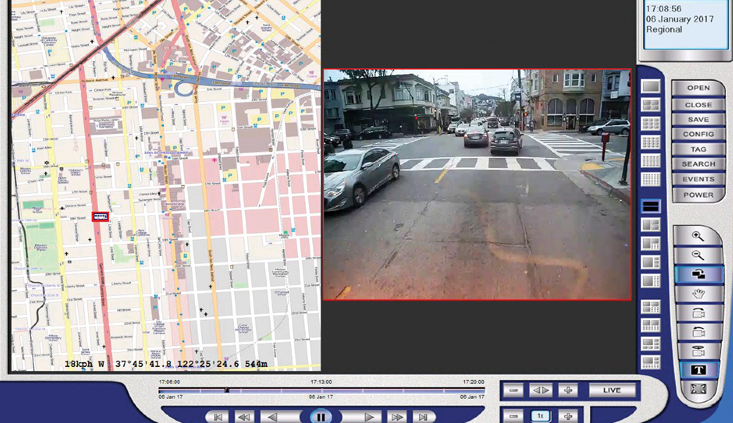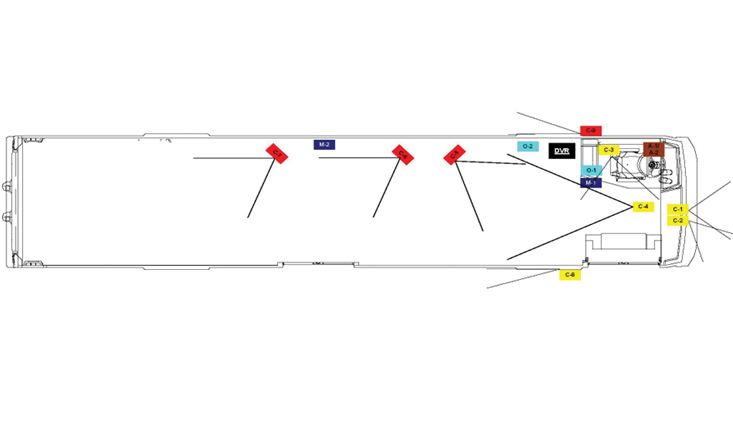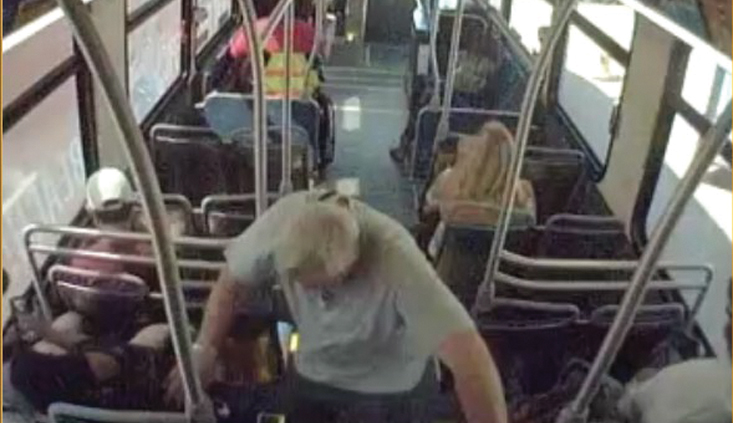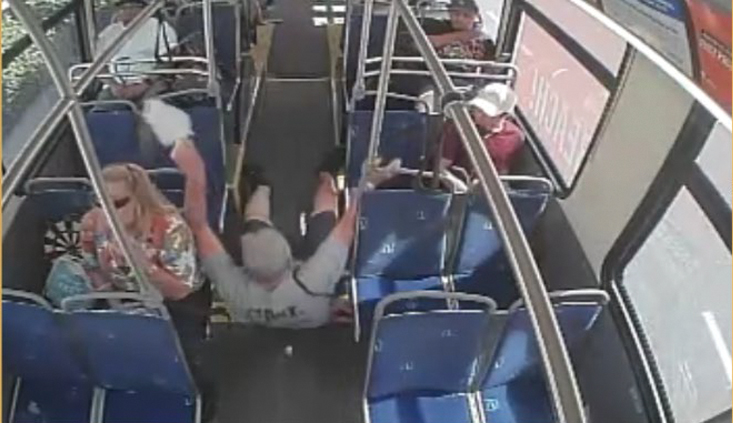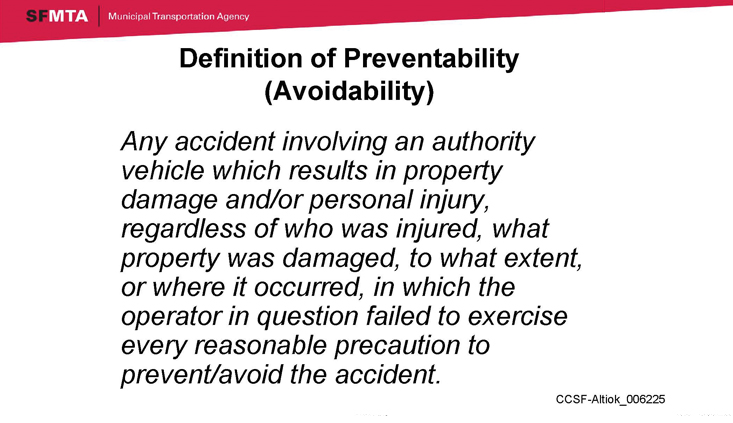Municipal bus accidents: Evidence and discovery
The evidence you need, where to find it, and how to use discovery to take advantage of common-carrier duties
Municipal-bus cases refer to public transport generally run by a governmental entity. This article will contemplate three types of municipal bus cases: Bus vs. Pedestrian; Bus vs. Other Vehicle; and Passenger injury while riding in the bus.
Because the municipal bus line is a governmental entity it will be important to make sure that you properly and timely file a claim for damages pursuant to Government Code section 910. Make certain that you have identified the proper entity. For example, the City and County of San Francisco is the appropriate entity for a case against “Muni” whereas Orange County has its own separate transportation entity (Orange County Transportation Authority “OCTA”). Once you have identified the proper entity, check with the entity to determine whether they have their own claim form. As an example, the City and County of San Francisco has a claim form.
Initial preservation and gathering of evidence
Hopefully, you are contacted about the case soon enough after the injury-producing event to allow you to gather evidence. If the case is being referred to you, make sure you have identified what evidence the referring lawyer has sought to preserve. Bus crashes will typically result in physical evidence at the scene and video camera recordings. In a bus-versus-pedestrian case your client may not be available to you for a description of what happened and you should not wait to begin your investigation and preservation efforts.
Immediately review the collision scene via Google Earth so that you can orient yourself to the scene; A street view will assist you in identifying potential sources of evidence.
Identify the bus route and get a good understanding of the time allowed to complete the route in the traffic conditions at the time of your injury event.
Your client’s vehicle: In a bus-versus- pedestrian case or bus-versus-vehicle, secure your client’s vehicle for the download of the EDR and/or crush analysis.
Bus video: Buses will have multiple cameras. It is extremely important that you immediately send a letter to preserve all on-board video.
Bus telemetry: All computer data for the vehicle involved.
Bus defendant investigation:
The identity of all witnesses
Body cam recordings of witnesses by bus investigators
Audio recordings of witnesses by bus investigators
Written reports by bus investigators
Driver call reporting injury event
Bus defendant driver information:
a) Application for employment
b) CDL license
c) Driver’s certification of prior traffic violations
d) Driver’s certification of prior crashes
e) Driver’s employment history
f) Pre-employment MVR
g) Annual MVR
h) Annual review of driver history
i) Certification of road test
j) Medical examiner’s certificate
k) HAZMAT or other training documents
l) All drug and alcohol testing records of the driver
m) All inquiries and responses regarding the driver’s employment history
n) The entire personnel file of the driver involved in this crash
o) The driver’s post-crash alcohol and drug testing resultsp) Any reports, memos, notes, logs or other documents evidencing complaints about the driver in the above crash at any time.
Neighboring businesses and residences: Depending on the nature and location of the claim, you should consider assigning an investigator to immediately go to the collision scene and speak to neighboring businesses employees or residents.
Arm your investigator with a letter to preserve evidence for each address they will be visiting.
The investigator should ask if the neighboring businesses and residents have a surveillance system that recorded the event or leading up to the event.
The investigator should ask for any information that relates to your collision.
The investigator should ask for any information that relates to other collisions at the scene.
A speeding bus may be captured on video or running a light a block away from where your collision occurred (this is helpful in the bus driver’s deposition when she/he testifies that they were following all the rules up to and including the time of your event.
Law Enforcement:
Collision report
911 audio: Our office will typically have the audio transcribed.
Dispatch records
Body cam video of witness interviews: Our office will have the audio transcribed by a court reporter if we intend to use the audio in deposition or trial.
Bus video if collected by law enforcement
Video collected from neighboring residents or businesses
Blood toxicology samples, if collected
Depending on the nature of your claim, you may want to immediately assign a reconstruction consultant to preserve the scene evidence:
Location photos
Video of traffic patterns
Laser measurements
Video of traffic-light sequences
Depending on the time of your case event, collection of ambient lighting conditions
California Public Records Act and Freedom of Information Act request: Secure all plans for the area of the crash. If the crash occurred at an intersection, secure the signal phasing diagrams and timing charts.
Bus Route analysis may show that the driver in your case was running behind or ahead of schedule. If the driver is running behind, then the driver may have been trying to make up time by driving faster. If the driver is ahead of schedule, then the driver may have been driving faster than allowed leading up to the crash. Most municipal-bus entities will have policies against being ahead of schedule. Some routes are simply not capable of being completed in the time allowed under the traffic conditions existing at the time the route was being completed.
911 audio may reveal a witness who is not identified in the traffic collision report. Bus driver audio reporting-injury event may contain statements contrary to what is contained in the traffic collision report or in the bus entity investigation report.
Scene preservation by crash-reconstruction consultant
In one case we had the scene video recorded and laser-measured within a week of being retained. I visited the collision scene on several occasions during the pendency of the case. As we were in final trial preparation the State began major modifications of the crash intersection. Because we had photos, laser measurements, and video, we had all the foundation we needed for trial. The defense, on the other hand, had not undertaken any of the work.
Recording the signal phasing may show a conflict between the signal phasing diagrams and timing charts. Do not rely on the signal phasing diagrams and charts alone – confirm that they are accurate.
Police body-cam video
Unfortunately, many responding officers are biased in favor of the municipal defendant. Body-cam video can often show this bias in the way witnesses are questioned. Recordings of what the witness said can wary wildly from the body cam recording of the witness answering the officer’s questions. Basic investigation policies and procedures are often ignored; for example, in a bus-versus-pedestrian brain-injury case the officer allowed the middle-aged six-foot, four-inch male driver to stand over the shoulder of the 25-year-old five-foot, four-inch female witness as the officer asked the witness leading questions.
Despite the intimidating environment, the witness stuck to her story that our client began to walk on a green light. Incredibly, the officer’s report did not match the witness’s rendition of what she saw. We shared the body-cam video and the inaccurate statement attributed to her with the independent witness before she was deposed. The independent witness was offended by the inaccurate statements attributed to her and she was strong for our client.
Although the reporting law enforcement agency was not a defendant in the case, the officers had met with the Deputy City Attorney defending S.F. Muni before the deposition. The deposition began with establishing that the reporting agency was not a defendant and that the attorney-client privilege did not apply to the meeting with the Deputy City Attorney. The officer then testified to a certainty as to the accuracy of his report. We then used the body-cam video in that reporting officer’s deposition to show the inaccuracy. The video deposition testimony of the officer later trying to explain why his report did not match the witness statement was priceless.
In the same case Muni investigators arrived at the scene. Police body-cam video identified five investigators, yet S.F. Muni only identified three. This inaccuracy contributed to the overall impression that S.F. Muni conducted a sloppy investigation, which was not aimed at determining the truthful cause of our client’s injuries.
Bus on-board video
Municipal buses will generally have multiple cameras. Make sure you request the preservation of all on-board video and consider that the video may continue to record after the injury-producing event. In one case against S.F. Muni the video recorded audio of the driver speaking to one of the reporting officers.
Learn how to operate and navigate the bus video. The options include a single view with a location and speed side by side: Review each camera for the same moment in time. A camera pointing forward may show a red light but a camera on the same bus pointing in a different direction may show helpful evidence. In one of our S.F. Muni cases, the defense was that our client jumped the light when she began to cross the street. A rear-facing camera showed other pedestrians entering the street on the opposite side at the same time that our client entered the street.
Understand how the camera lenses affect what is being recorded. For example, a typical consumer high-end camera may have a 50-55 mm lens – that is the depth of field. Camera manufacturers use the 50-55mm depth of field because it closely resembles the human depth of field. However, the human eye is unique in that each eye has a horizontal field of view (“FOV”) of about 135 degrees and a vertical FOV of just over 180 degrees. Depending on the recording sensor, a 50 mm lens will have a 47-degree FOV. An analogy is to put blinders on the outside of each eye. This is important because no matter what equipment is being used to video, the video will be distorted to the defendant’s advantage. For example, the front-facing camera may have a 50 mm lens. The driver’s eye has the ability to see a wide field of view of nearly 180 degrees, but the front-facing camera is only showing the center 47 degrees and not the full view that the driver is perceiving. A side- or rear-facing camera may have a larger field of view (“wide angle”), but as it does so the lenses’ depth of field will decrease, making things seem further away. There are many articles available online that aid in understanding these principles.
Discovery documents
We serve an initial, very comprehensive request to produce. We then push and push for production that is complete and code compliant. We insist that the response identify which documents are responsive to which request. Without fail, we receive multiple supplemental document productions the further we push.
Relating to the cameras, we request documents including those that show a diagram of the subject bus, the location of each camera, the manufacturer and model number of each camera, the specific lens manufacturer, model number, “f” aperture setting, and field of view (generally described as lens angle) of each camera, and video-recording device. In a case involving OCTA, we did not get a video showing the view from the left of the bus. This was, in our experience, very unusual. The bus did not have a camera that showed the view of traffic approaching the bus on the left. A simple drive around town looking at OCTA buses confirmed that the left-side camera is almost always part of the camera configuration. We pursued OCTA’s order specification for the subject bus and other buses. You would be correct to guess that there is a high incidence of collisions involving buses pulling into traffic as they merge left. Take the deposition of the PMQ regarding cameras and have that PMQ witness testify as to issues of field of view and depth of field. The PMQ regarding cameras can save you the expense of an expert on the same topics.
Obtain the bus specifications from the defendant including:
1. Vehicle ID Number (VIN)
2. size and weight;
3. engine make, model and configuration;
4. transmission make, model and configuration;
5. all equipment on the subject bus when delivered to defendant by the manufacturer;
6. any and all equipment added to the subject bus after its delivery to defendant by the manufacturer;
7. any and all promotional material provided by the manufacturer of the subject bus before the purchase decision by defendant;
8. any and all material provided by the manufacturer of the subject bus relating to acceleration rates;
9. any and all material provided by the manufacturer of the subject bus relating to stopping distance;
10. any and all material provided by the manufacturer of the subject bus relating to rates of deceleration in normal stopping operation.
Training materials are the treasure trove that keeps giving. Driver-training materials will set the rules that drivers are supposed to follow. Ask for Employee Handbooks, Driver’s Manuals, Newsletters, Bulletins, Brochures or other documents that relate to, describe, detail or instruct the manner in which defendant entity drivers were to perform the duties of their employment at any time up through and including the date of the incident.
Ask for training materials such as the Smith System®. If you have a pedestrian case, ask for training materials and policies and procedures to be followed by defendant entity bus operators ensuring pedestrian safety.
In the SF Muni pedestrian case where the defense claimed that our client jumped the light, our theme became that the driver was trying to beat the light and went into the intersection on a very stale yellow. Unfortunately, for the lay person, going into an intersection on a stale yellow does not sound like negligence. However, through the use of frame-by-frame video analysis and training materials, the driver testified that had he followed the materials, he should have avoided the collision.
On the bus
Bus passengers are often injured because the bus driver accelerates before the passenger is in a secure position. This is a violation of training. Depending on your client, moving the bus before the elderly or disabled passenger is in a secure position is also in violation of the American with Disabilities Act.
The photos above are screen shots from an OCTA bus where the driver had to make a panic stop when he was pulling away from the curb – while our elderly, disabled client was still walking toward a seat.
Note that the law holds “common carriers,” which bus companies are, to a very high standard of care. Civil Code section 2168 says,
Everyone who offers to the public to carry persons, property, or messages, excepting only telegraphic messages, is a common carrier of whatever he thus offers to carry.” Civil Code section 2100 says, “A carrier of persons for reward must use the utmost care and diligence for their safe carriage, must provide everything necessary for that purpose, and must exercise to that end a reasonable degree of skill.
This standard is reflected in CACI No. 902. Duty of Common Carrier: 902, which says: “Common carriers must carry passengers [or property] safely. Common carriers must use the highest care and the vigilance of a very cautious person. They must do all that human care, vigilance, and foresight reasonably can do under the circumstances to avoid harm to passengers [or property].”
In summary, get your evidence early and use government codes, regulations, and defendant training materials to prove your case from the driver’s own testimony.
M. Lawrence Lallande

M. Lawrence Lallande of Lallande Law, PLC focuses his practice on truck crash, bus crash, and brain-injury cases and is the current Chair of the AAJ Bus Litigation Group. Mr. Lallande is a longstanding member of ABOTA and is a member of the CAALA and CAOC Boards of Governors. He received CAOC’s 2023 Street Fighter of the Year award.
Copyright ©
2026
by the author.
For reprint permission, contact the publisher: Advocate Magazine

